

Add GCE hostprovider
This topic shows how to add the Google Compute Engine (GCE) hostprovider, which allows to create virtual machines in the Google Cloud.
|
IMPORTANT
Before adding the GCE hostprovider, make sure that:
|
A typical installation sequence for the GCE hostprovider includes the following steps.
Step 1. Download a hostprovider bundle
Hostprovider distributions for ADCM come in bundles. Regarding the GCE hostprovider, a bundle is a regular archive that includes a description and logic to interact with the Google Cloud.
The steps for downloading a bundle are given below:
-
Go to the Arenadata Cluster Manager product website and click Download.
 Switch to the Arenadata Cluster Manager download page
Switch to the Arenadata Cluster Manager download pageAnother way — go to https://network.arenadata.io/ and select Arenadata Cluster Manager.
-
In the list of ADCM releases that opens, click Download for the ADCM version that you need.
-
On the next page, download a required bundle. GCE hostprovider bundles are called Google Compute Engine Bundle.
Step 2. Upload a hostprovider bundle to ADCM
To upload a bundle to ADCM, follow the steps:
-
Select the Bundles item in the left navigation menu and click Upload bundle.
-
Select a bundle in the Open File Dialog.
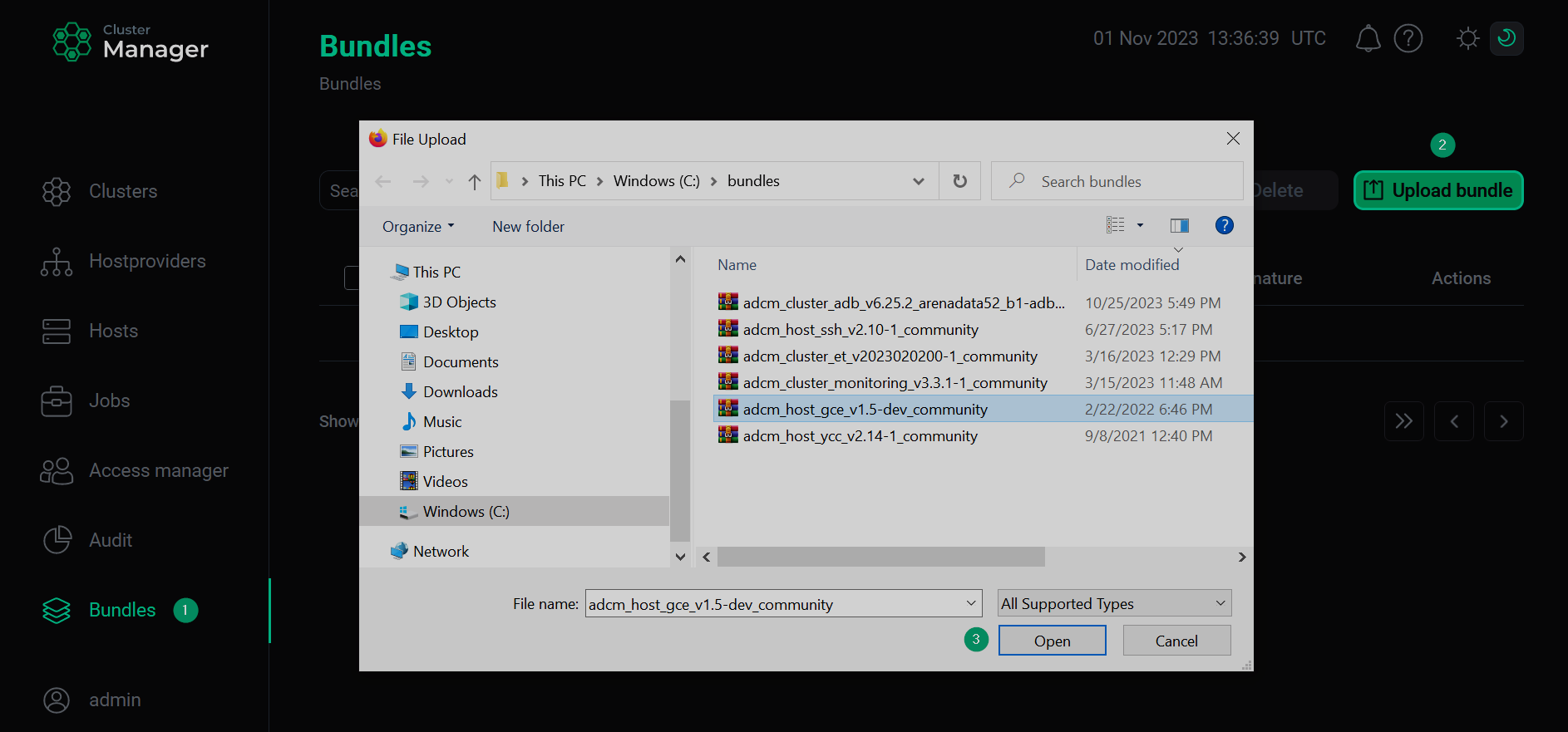 Upload a bundle
Upload a bundle Upload a bundle
Upload a bundle -
As a result of the performed actions, a bundle is displayed on the Bundles page.
 The result of successful uploading a bundle
The result of successful uploading a bundle
Step 3. Create a hostprovider based on the uploaded bundle
To add a new hostprovider to ADCM on the base of the uploaded bundle, follow the steps:
-
Select the Hostproviders item in the left navigation menu and click Create provider.
 Create a new hostprovider
Create a new hostprovider -
In the opened window:
-
Select an uploaded bundle in the Type field.
-
Select a bundle version in the Version field. Several versions become available in the case of different versions of the same bundle being uploaded.
-
Enter a hostprovider name in the Name field.
-
Enter a hostprovider description in the Description field if necessary.
-
Click Create.
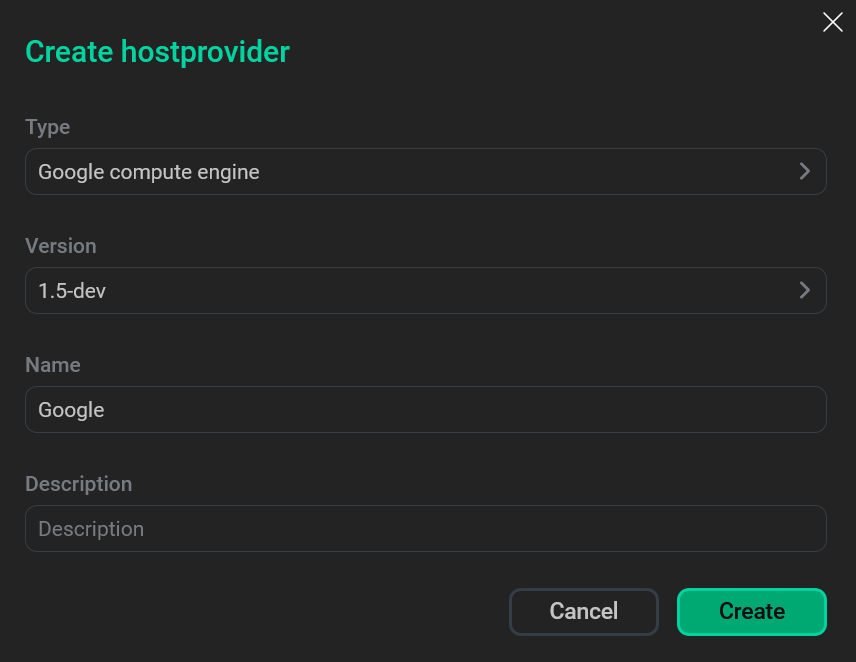 Fill in hostprovider parameters
Fill in hostprovider parameters -
-
As a result of the performed actions, the created hostprovider is displayed on the Hostproviders page.
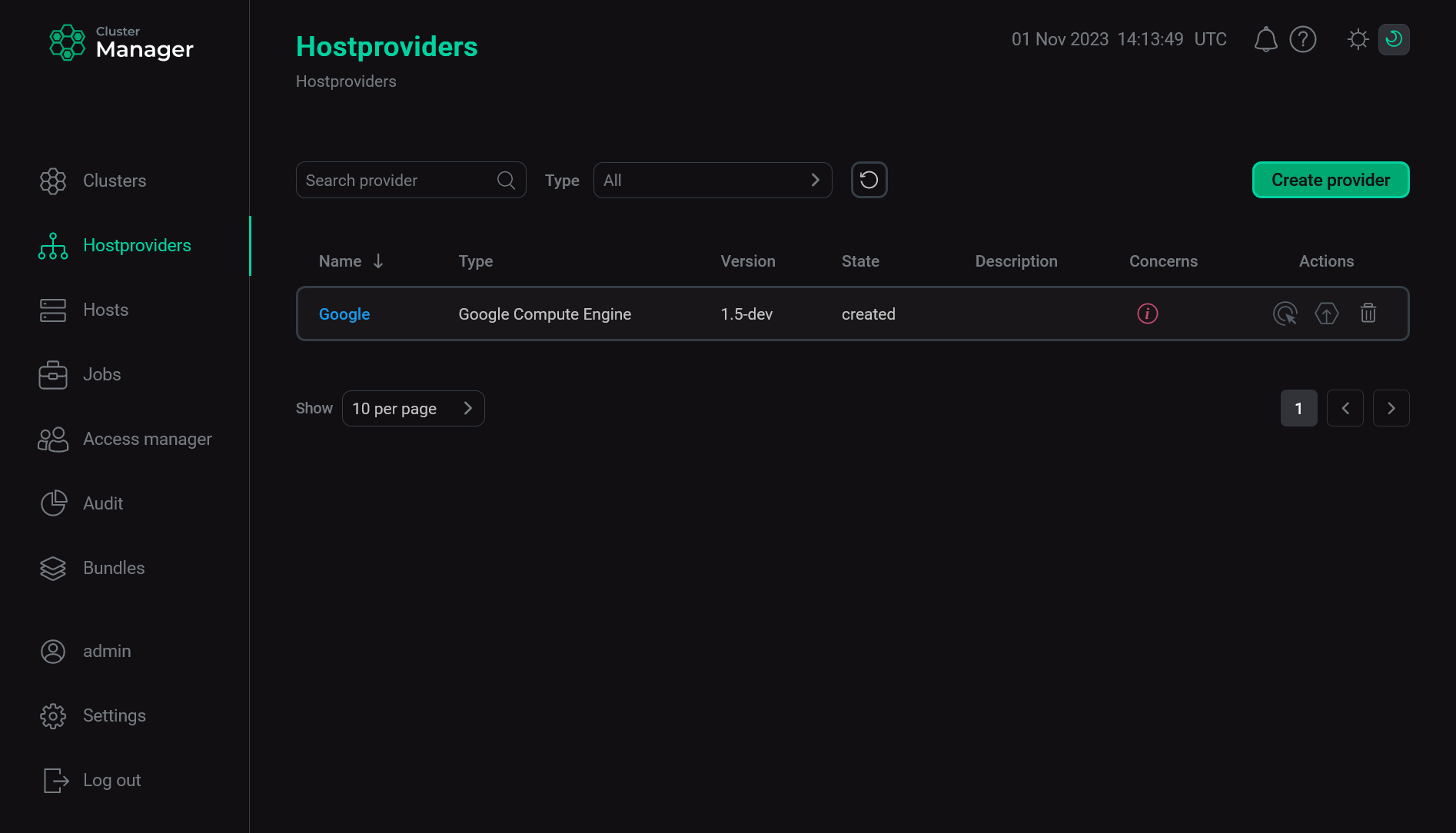 The result of adding a hostprovider successfully
The result of adding a hostprovider successfully
Step 4. Configure a hostprovider
In order to configure the access to the cloud, follow the steps:
-
Select a hostprovider on the Hostproviders page. To do this, click a hostprovider name in the Name column. Alternatively, you can hover over the
icon in the Concerns column and follow the link in the pop-up window that opens. The icon indicates the presence of critical errors in the current hostprovider configuration (e.g. mandatory fields).
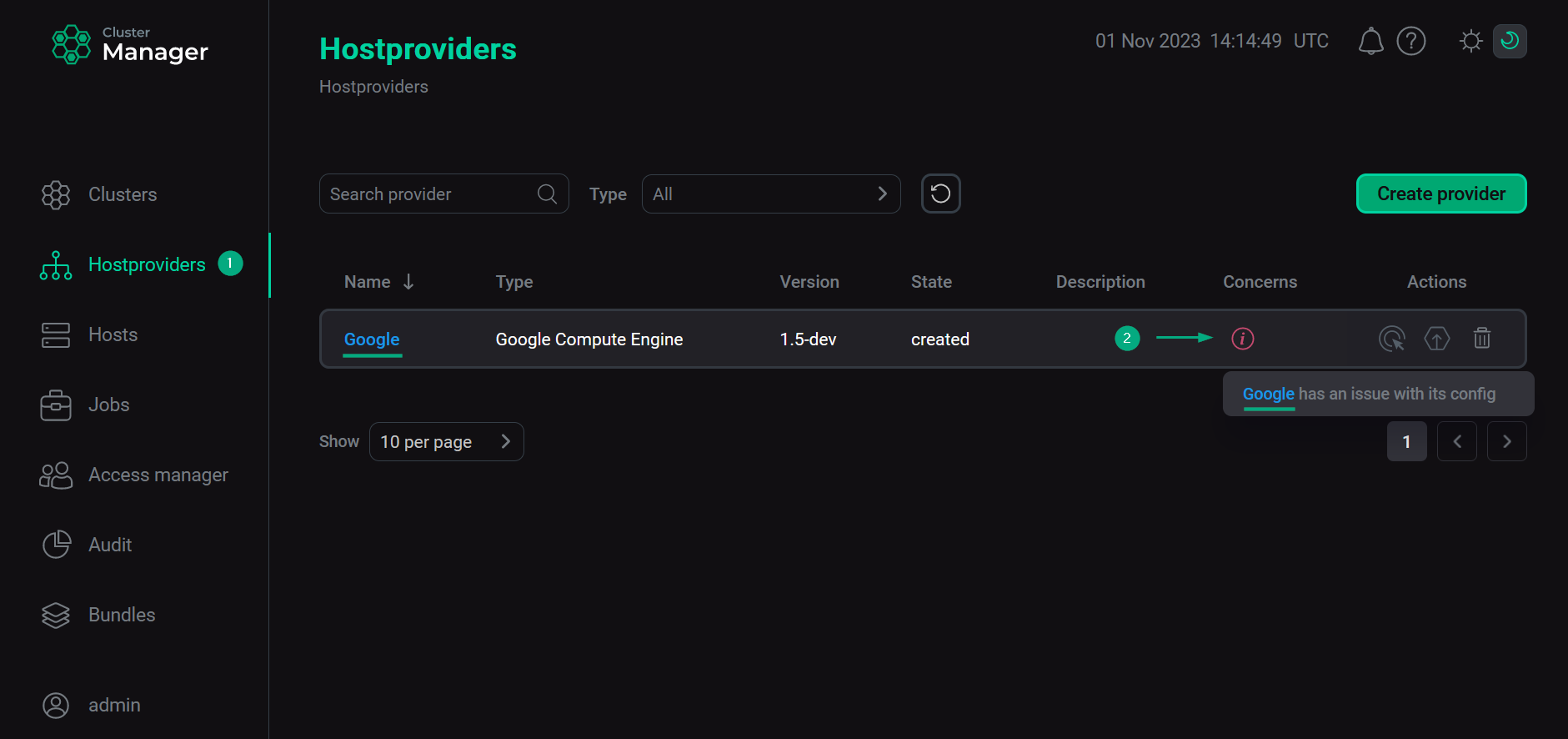 Go to configuring a hostprovider
Go to configuring a hostprovider -
In the next window, switch on the Show advanced toggle, fill in hostprovider parameters, and click Save. The fields highlighted in red are mandatory.
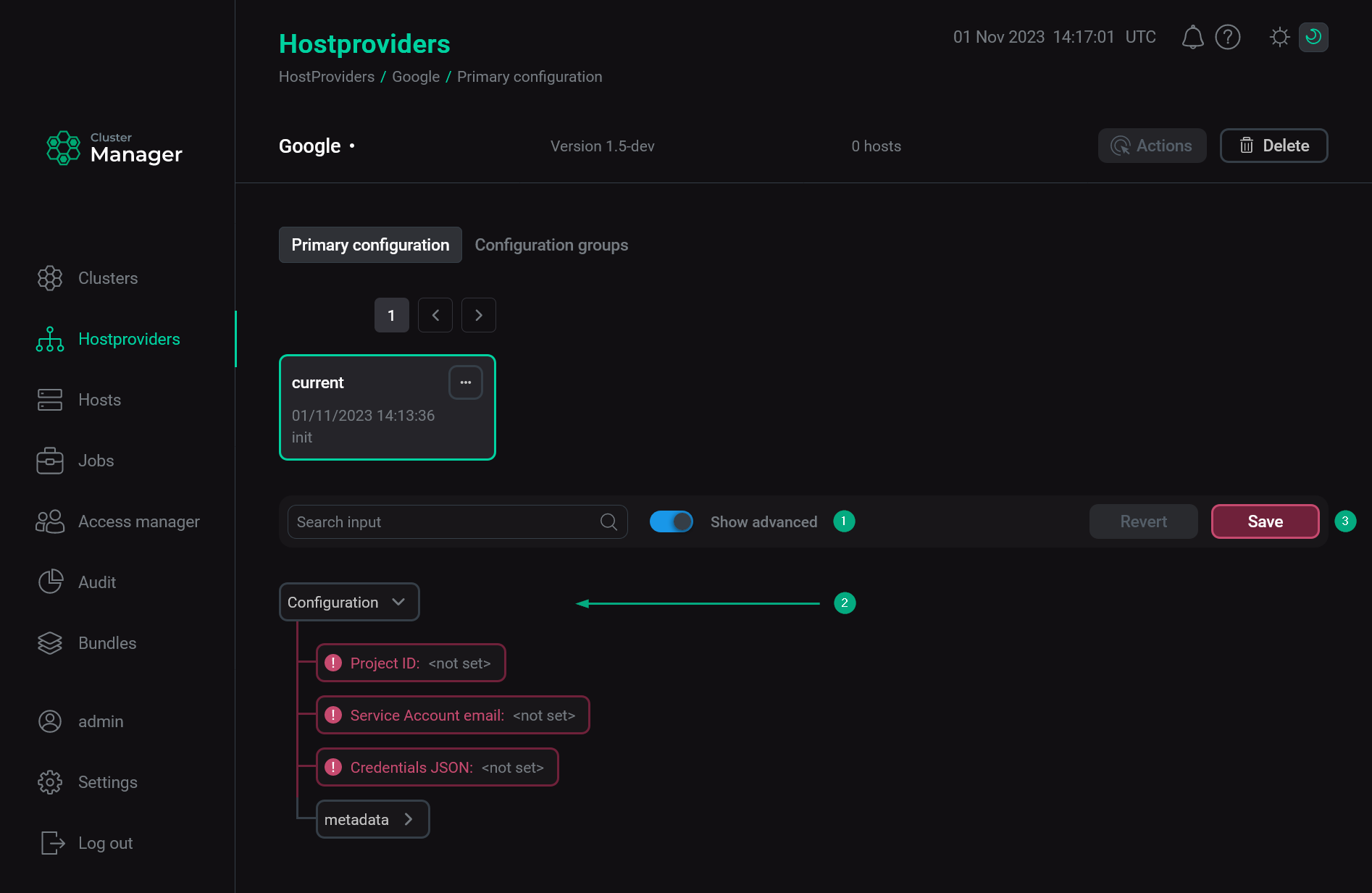 Configure a hostprovider
Configure a hostproviderThe assignment of parameters is listed below.
Configuration parameters Parameter Mandatory Description Project ID
Yes
A unique project identifier in the Google Cloud. Can be copied from the Id column in the Manage resources section of the Google Cloud platform
Service Account email
Yes
A service account email. You can create and view service accounts of the project in the Service accounts section of the Google Cloud platform
Credentials JSON
Yes
Credentials of the service account in the JSON format. To upload credentials in the JSON format, navigate to the Service accounts section of the Google Cloud platform, select Create key in the Actions context menu, and get the credentials
Ssh keys
No
A list of OpenSSH keys with the
user@hostnamedata in the end. When virtual machines are added, the users list is parsed from this field. Every user is created with the corresponding key -
Return to the Hostproviders page. As a result, the
icon stops being displayed in the Concerns column. The actions available for the configured hostprovider can be opened by clicking the
icon in the Actions column.
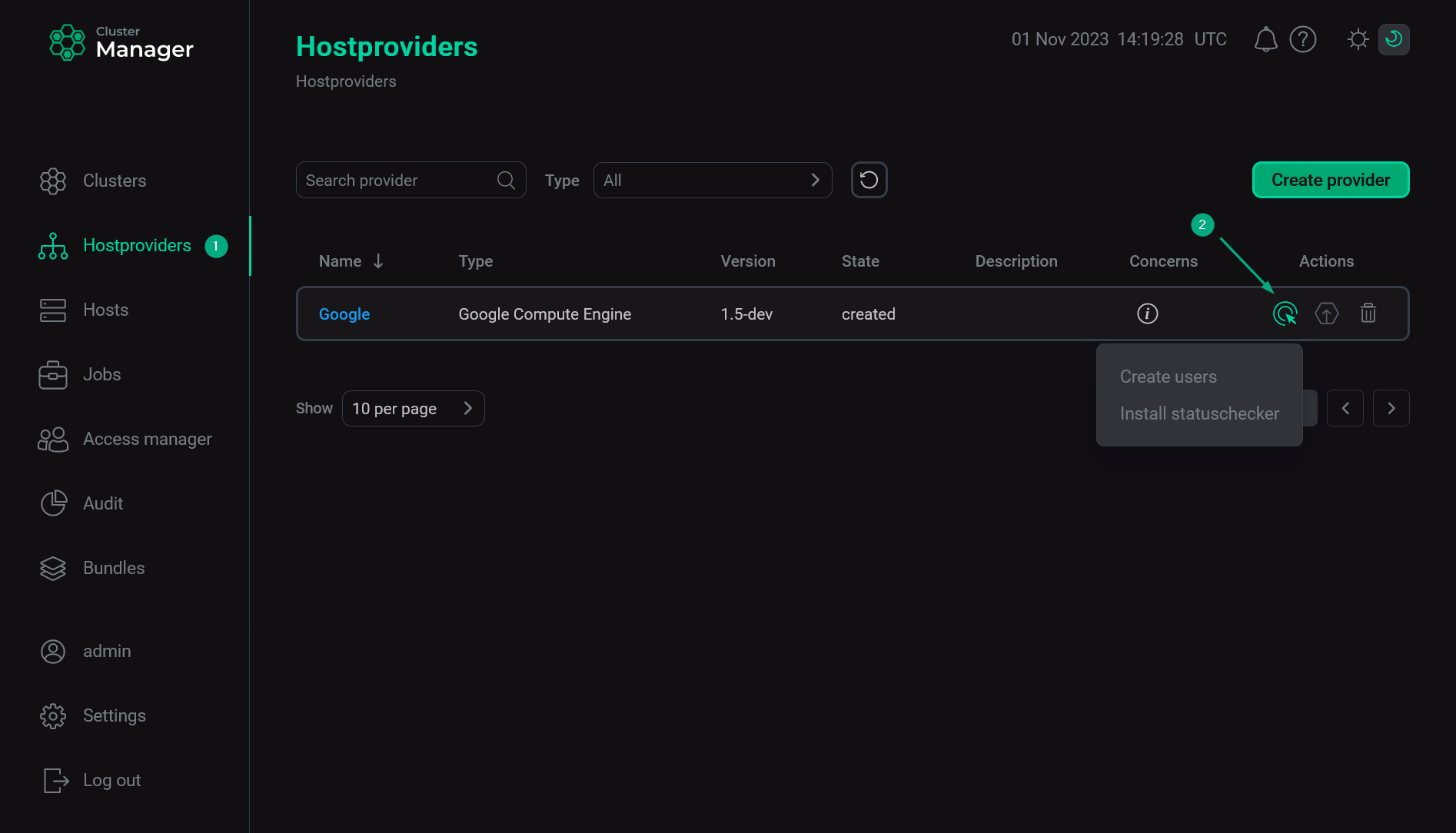 The result of configuring a hostprovider successfully
The result of configuring a hostprovider successfully